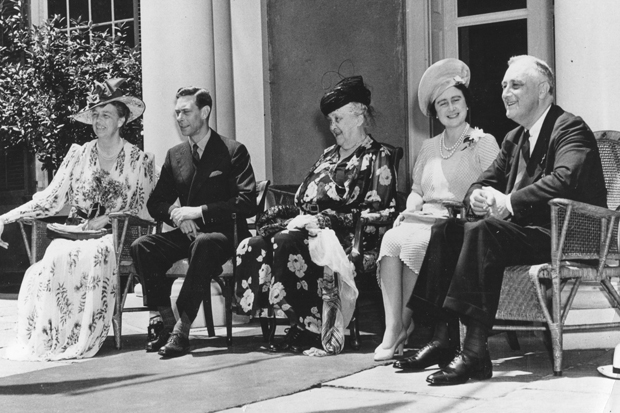‘Tell me what you eat and I shall tell you what you are.’ The best known adage in food literature, penned by the French politician and gastronome Jean Anthelme Brillat-Savarin, divides all of us generally: the gourmands from the picky, the greedy from the careful, one nation from another, one culture from the next.
Laura Shapiro’s book about six famous women and their ‘food stories’ made me want to re-read a few biographies for those food moments. Shapiro claims that food in life stories is undervalued as a subject, considering how much time people spend eating. Their tastes, loves, hates, phobias, habits and cravings can tell us as much about people as the more ‘essential’ topics within their stories; their politics, vision, power and, not least, their sex life.
Past biographers and scholars saw food as a tough sell, says Shapiro:
These issues and more can be brought to bear on the making of dinner — but back then the great minds, not to mention most of their graduate students, were reluctant to descend to the frivolous realm of the kitchen.
For Shapiro, a food journalist who wants a person’s whole story, food is the entry point to her subjects’ lives.
At first look Shapiro has assembled a weird cast of characters. I would certainly not want all six round my table as fantasy guests, and they have not necessarily been chosen for an outcome that will make the reader hungry. But it’s a successful approach. What She Ate is truly original and fascinating; a new and clever form of food writing. Sensuality, sympathy, snobbery, humour and horror — all are here.
‘It turns out that our food stories don’t always honour what’s smartest and most dignified about us. More often they go straight to what’s neediest.’ Shapiro’s first subject is Dorothy Wordsworth, William’s devoted sister. She is followed by the hotelier-cook Rosa Lewis, better known to millions of 1970s’ TV viewers as the Duchess of Duke Street. Third is Eleanor Roosevelt — be very afraid of her food. Then comes Hitler’s secret hausfrau, Eva Braun — an account summoning uncomfortably chilling images. Next, Shapiro rediscovers the postwar novelist Barbara Pym, who turns out to be the sort of heroine she herself could have created. And, finally, there is the emaciated inventor of the dysfunctional food editorial, Cosmopolitan editor and author Helen Gurley Brown. What a bunch.
Shapiro likens her research to standing in a supermarket queue, peering into other people’s trolleys. It’s not easy to picture Dorothy Wordsworth in Tesco (though I enjoyed trying), but the references to food found in her Grasmere journals take you straight into the kitchen of Dove Cottage, with freshly shelled peas, gingerbread and gooseberry tart on the table. Her diaries were written in the happy period before her brother’s marriage and her inevitable usurpation, when Dorothy played devoted surrogate wife to William and hostess to his friends. There are numerous mentions of food: growing it, preparing it and the meals themselves, often left out by Dorothy’s previous biographers.
Here they are feasted upon by Shapiro, who believes that Dorothy recorded these details as a reminder to herself that everything at Dove Cottage mattered, and that she was ‘intent on keeping a written record of how she fed William and their guests, as if to shore up her right to a role she wouldn’t dream of claiming openly’. So sad and big-hearted — and short-lived. Soon, Dorothy’s changing life, as told through her appetite, ignites a great sense of injustice. That she was much loved, to the end, helps.
Rosa Lewis, Eastender, chef-patronne of a famous hotel, social striver, royal favourite and possible liar, achieved the extraordinary. She emulated, and was respected by, the French chefs who then ruled London’s kitchens. And she bought and ran the Cavendish Hotel on Jermyn Street, making it a home for noblemen on visits to London who wanted to escape their wives.
Stories about Rosa, both true and unverified, are legion. I have been told that she used to launder the drinks bills among her guests, getting American visitors and what she called the ‘boughten nobility’ to pay for the champagne drunk by her beloved British aristocracy. Her food story is a little obvious, because food was her career. But it is a tale of hard graft and — as so often in class-riven Britain — closing doors. Most endearing was her refusal to drop her cockney accent. She called Jeroboams ‘cherrybums’. I shall borrow that, given the opportunity.
Martha Gellhorn, accompanying Ernest Hemingway to stay with the Roosevelts at the White House in 1937, stopped to eat three sandwiches. That the food at the White House was revolting was known by all Washington, she explained. Hemingway remembered ‘rainwater soup followed by rubber squab’. It was, he told his mother-in-law, the worst meal he had ever eaten. Actually, by the then White House standards, this menu sounds bearable. The problem was that FDR’s love of rich food clashed with his First Lady’s politics — rightly sensitive during the Depression — creating a culinary cold war at home. Fatally, she also delegated responsibility for the White House kitchen to a trusted former servant.
That servant, Mrs Nesbitt, was a martinet with an olfactory bypass who, when she was not experimenting with scary modern recipes of the time (‘Ham Hawaiian,’ ‘Seafood Surprise,’ ‘Jellied Bouillon Salad’), implemented Eleanor’s passion for home economics. The First Lady was a great supporter of the new science of housewifery. Unfortunately, home economics’s good intentions forgot the palate. Raw vegetable salads and stewed mutton were nutritious and cheap. Eleanor approved. But later there is intriguing evidence that a happier Eleanor began to relish good food.
Put Eva Braun into a book about lives with food and a chill descends over the pages. Eva had two obsessions: her adoration of Hitler and her own persona, starring in her fantasy as the lady of the Führer’s house, chiefly his mountain retreat, the Berghof. She seems at first an unwise choice for Shapiro, but in her hidden life is a story of excessive feasting among the Nazi top brass. She dieted obsessively to keep slim, though did not hold back on pilfered champagne, the number one tipple of the Reich. Beside her at sunny summer lunch parties, Hitler ate vegetarian food off a special tray, while his circle gorged on heaps of nourishing traditional country fare. Shapiro’s detailed research reveals a horror story of disparities between the starving and sated, and Eva’s deranged obliviousness.
The lives of the last two featured women are set in the years after the war. Both relate a theme of having what is needed, not wanted. The novelist Barbara Pym would have known only too well about food shortages. Her very English, quiet novels about spinsters and social life among the clergy are packed with references to food — often excellent food — and are truthful. ‘Perhaps it was because Barbara was neither a gastronome nor a sensualist that whatever she said about eating tends to slip quietly off the page.’ She used food not only as a prop (comfort, comedy or longing) for her characters, but also for herself, in a difficult period over which she eventually triumphed.
Helen Gurley Brown, however, knew only success, as the author of Sex and the Single Girl and the editor of Cosmopolitan. Being famously thin, she considered fattening foods the enemy. ‘Skinny to me is sacred’ was one of her sillier lines. She nevertheless published endless advice on a girl’s kitchen. Always have the makings of a hearty breakfast on hand, she tells the liberated single girl, ‘since you don’t always know the night before whether you’re going to have a guest in the morning’. You get the picture with Gurley Brown. ‘Food is sexy!’ Enough of her.
Shapiro pulls off her idea well. Take a character — any — and find out what they ate. There’s a series here. Margaret Thatcher, Marilyn Monroe, the Queen Mother? You will see them in a different place to the usual offices, red carpets or palaces. You’re heading for the kitchen, where many secrets are hidden.


















